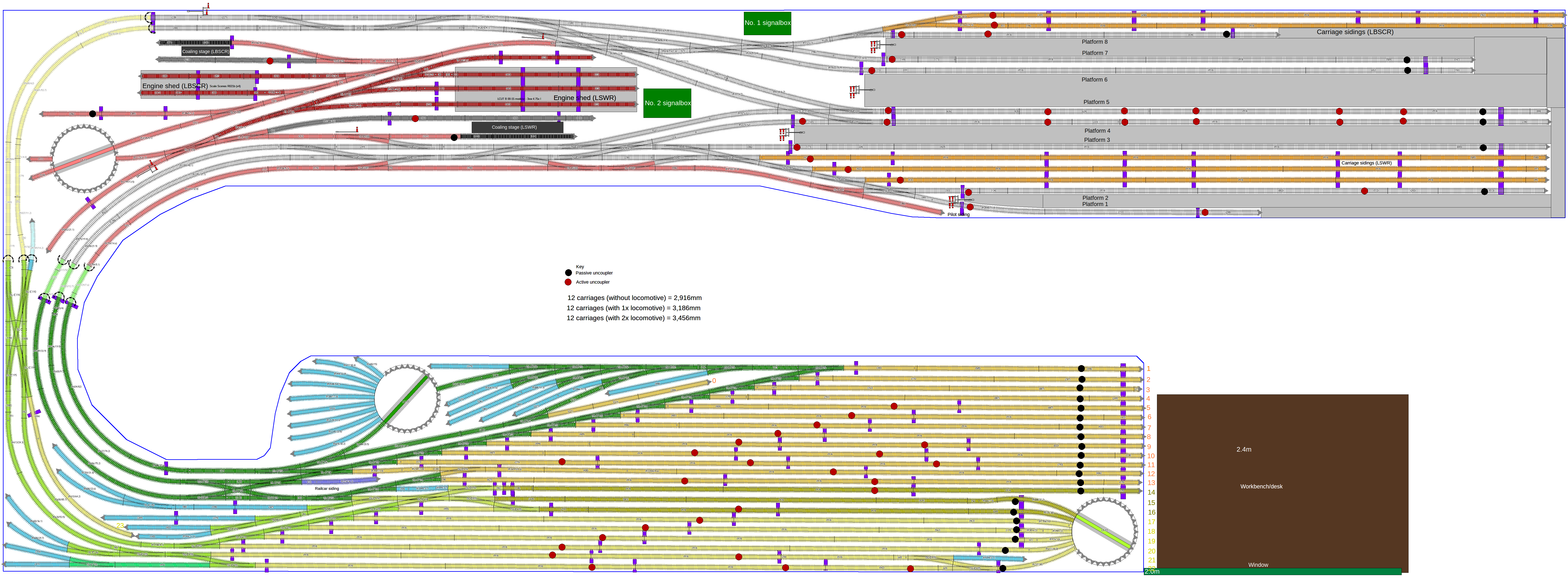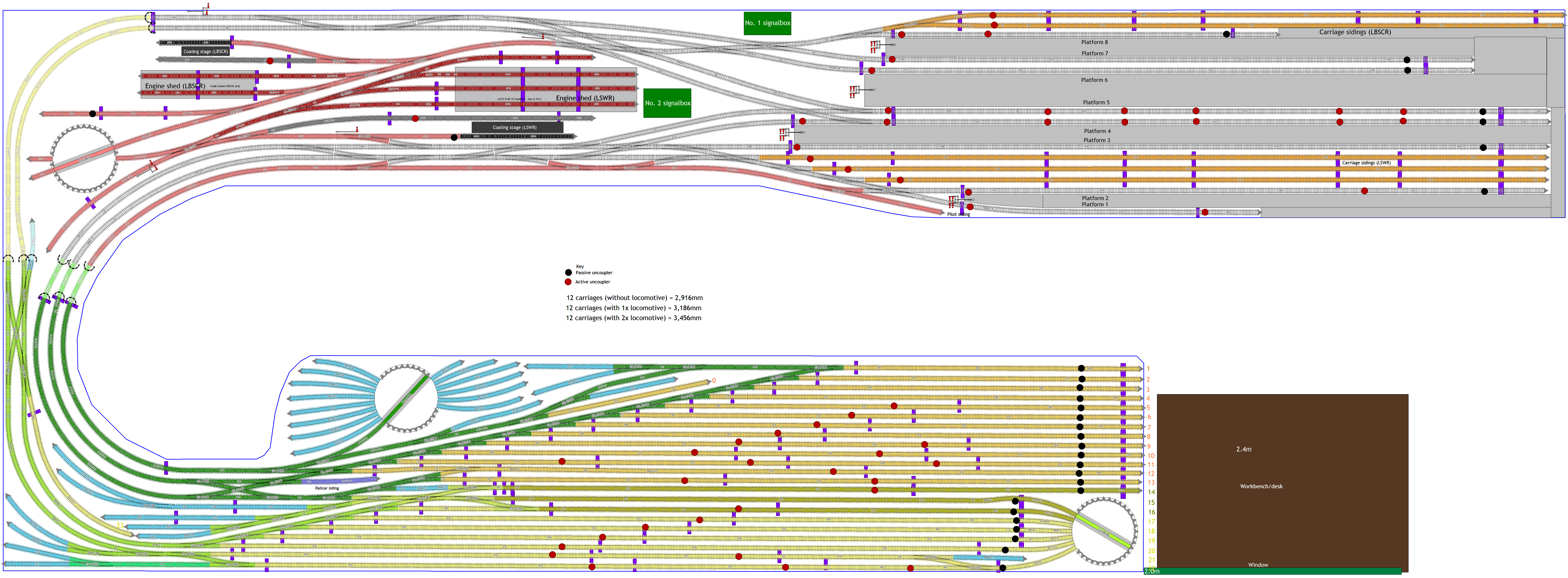
An advantage of this is that it does not have the reduced width area in the shed next to where the bulged part was. The revised design also reduces the total number of turnouts a little as well as removing the headshunt function from fiddle yard road 1 and providing an entire parallel route for locomotives positioning themselves to couple to trains in the LSWR fiddle yard sidings, which should reduce conflicts. As will be seen, it makes greater use of the turntable for storage purposes than the previous design.
In terms of the construction of the layout and its relationship to the layout and planned layouts below, a number of conclusions were reached. First of all, the baseboards will be delivered in two tranches: first of all the scenic section and then the fiddle yards. The scenic section will be delivered but not installed. This is the section that will fit over the N gauge baseboards below. Then, I will lay the track and work on the wiring on these boards using one or more trestle tables in the so far clear side of my shed, where in future the fiddle yards of this layout will go. Once that is sufficiently complete, the second tranche of boards will be delivered, and both will be installed. I can then lay the track on the fiddle yard sections (and any cross board tracks on the scenic sections) and wire that when it is in place. Only then can work begin on the modular portable N gauge layouts intended to go underneath the fiddle yards.
In the meantime, the N gauge layout will have to have its scenery installed in much the same way as an exhibition layout, i.e., so that it can be removed as and when necessary to allow access to underneath the boards above, as it will always be possible that access will need to be given to this area for maintenance. This means that there is no need to hold back now on starting on the scenery for this layout as there will not be a point in the future when there will be any less need for future access to the underneath of this layout than there is now.
To answer the questions - yes, the former LSWR and LBSC lines are intended to have their own parts of the fiddle yard: the orange roads are for the LSWR lines and the yellow roads are for the LBSC lines. The dark yellow roads are intended to be able to be used by either. This is not intended to be a recreation of a specific single location, but it is heavily inspired by a combination of Portsmouth, Southampton and Bournemouth. In particular, the LBSC services will be closely based on Portsmouth, and the LSWR services closely based on Southampton/Bournemouth. So, for example, we will have a Bournehampton Belle running once a day each way non-stop to Waterloo. We will have bi-hourly services to Waterloo non-stop and bi-hourly services to Waterloo stopping at some intermediate stations, making an hourly service to Waterloo in all. We will have cross-country services to Plymouth (originating in Brighton), Cardiff (once a day extended to Swansea), Liverpool and Birkenhead. Local services will run to Fawley and Poole, and longer distance local services will run to Weymouth and Salisbury among other places. On the LBSC side, there will be semi-fasts to Brighton, stopping services to Chichester, regular London Bridge services (as there were to Portsmouth before electrification of the former LSWR line), including one Pullman services to London Bridge, semi-fasts to Victoria, and the Cardiff and Plymouth trains will run through from the LSWR section, necessitating a locomotive change.


























